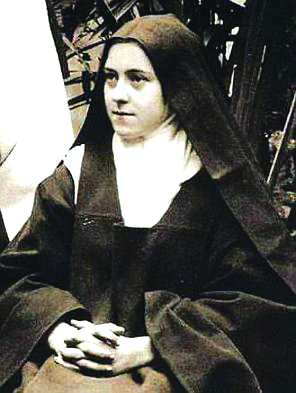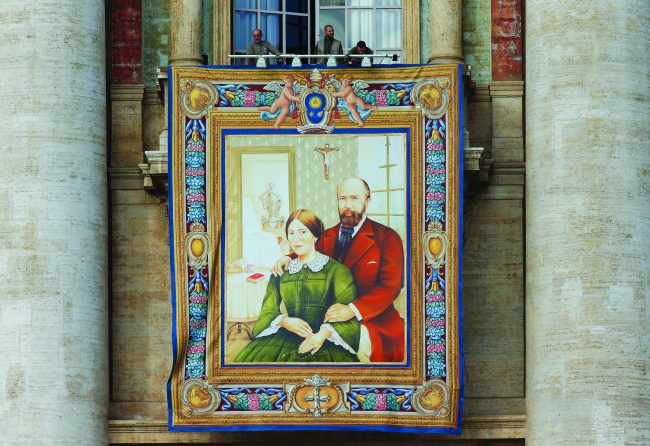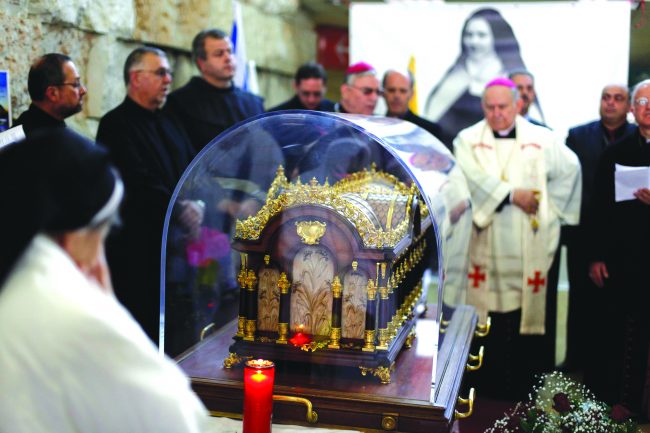St Therese of Lisieux relics touring Australia with parents
 Over one week in late March the relics of one of the most loved saints of modern times – St Therese of Lisieux, the Little Flower – will tour churches, a Carmelite monastery and one school in the Archdiocese of Canberra and Goulburn.
Over one week in late March the relics of one of the most loved saints of modern times – St Therese of Lisieux, the Little Flower – will tour churches, a Carmelite monastery and one school in the Archdiocese of Canberra and Goulburn.
Catholics from across our vast Archdiocese are expected in big numbers to a range of services including Masses, overnight vigils and prayer services when the relics of St Therese of Lisieux visit from 25-31 March.
When St Therese’s relics last visited Australia in 2002 an estimated 700,000 Catholics turned out to pray seeking her intercession. Greater numbers are expected on this tour.
On this occasion her relics will be accompanied by those of two other modern saints: her mother, Zelie and father Louis.
The dates and locations of the visit of the relics of the three saints from the one family were issued in December by Catholic Mission, the Church’s agency in Australia which supports missionaries around the world.
Saints Louis and Zelie Martin are the first married couple to be canonised in the history of the Church, reflecting in part the repeated urgings of the-then Pope John Paul II to find lay candidates whose causes might be promoted.
Throughout his papacy St John Paul II repeatedly called for ordinary laity – men, women and youth – who might be canonised to emphasise the call to personal holiness expressed by our baptismal vocation. This was also strongly emphasised by Vatican II.

Workers prepare a banner of Louis and Marie Zelie Guerin Martin, the parents of St. Therese of Lisieux, on the facade of St. Peter’s Basilica at the Vatican Oct. 16 in advance of a canonization. (CNS photo/Paul Haring)
Pope Francis canonised Saints Louis and Zelie in 2015.
The relics of the three modern saints will spend two and a half months touring Australian diocese from January 22 to May 10.
There are few – if any – other saints so beloved in the modern Church.
Although she died virtually unknown at the age of 24 in her monastery at Lisieux in France after having more or less forced her way into being accepted as an underage Carmelite at the age of 15, Therese is regarded as a giant of the Christian vocation to holiness.

(CNS photo/Nir Elias, Reuters)
She died in 1897 but her writings and her reputation for an astonishing (but at the time largely-hidden) sanctity saw public demand for her canonisation continue to grow until she was officially beatified by Pope Benedict XV in 1921 and declared a saint by Pope Pius XI in 1925.
Despite never having set foot outside her monastery after entering, she was named in 1927 as co-patron of the Church’s entire global missionary effort, joining the legendary 16th Century Jesuit missionary, St Francis Xavier.
In 1997 Pope John Paul II declared her to be a Doctor of the Church, a title which means an individual is recognised by the Church as a gifted teacher of the Christian faith. She became the 33rd person to be so recognised in the history of the Church.
Therese was also the youngest, and only the third of four women to be recognised with the title; the three others are fellow Carmelite St Teresa of Avila, St Catherine of Siena and St Hildegard of Bingen.
Therese’s appeal has grown steadily since her death.
Key to her influence on the modern Church is the only work she ever wrote, a series of letters on her spiritual journey, which were edited by her sister who also became a Carmelite and eventually published under the title of The Story of a Soul.
In her letters, Therese set out her famous ‘Little Way’ to holiness, which was to seek friendship with God in the small, ordinary daily events of life rather than big achievements or widespread influence.
Circulated first to other Carmelite monasteries, the book was published a year after her death and has had a phenomenal impact on the Church. It has never gone out of print.
Modern devotees of St Therese have included Beat Generation writer Jack Kerouac, philosopher and Nobel Prize winner Henri Bergson, legendary French singer Edith Piaf who maintained that she was cured of blindness as a child through St Therese’s intercession, and Mother (now Saint) Teresa of Kolkata, founder of the Missionaries of Charity, who chose Therese for her own name as a religious sister.
St Therese’s feast day is 1 October.
 Itinerary: Archdiocese of Canberra and Goulburn
Itinerary: Archdiocese of Canberra and Goulburn
Wednesday 25 March
8pm: Arrive St Peter and St Paul’s, Goulburn
Thursday 26 March
12 Noon Depart Goulburn,
3pm-6pm St Anthony’s Waniassa,
7pm-9pm St Monica’s, Evatt.
Friday 27 March
8am Depart St Monica’s, Evatt.
9-11am Merici College, Braddon, then pilgrimage to St Patrick’s, Braddon.
11.30-1pm St Patrick’s Braddon,
1.30-5pm, St Joseph’s, O’Connor,
5.30pm St Benedict’s Narrabundah for healing Mass and overnight vigil
Sat 28 March
8.30am Depart St Benedict’s,
9am-1pm Apostolic Nunciature, Red Hill
1.15pm Carmelite Monastery, Red Hill. The Carmelite Chapel will remain open for an overnight prayer
Sunday 29 March
9am Carmelite Monastery Mass,
10.15am Depart Monastery
10.45am St Christopher’s Cathedral, Forrest
11am Mass, followed by devotions and 5pm Mass,
6pm Depart for St Patrick’s, Bega. Arrivel 9pm
Monday 30 March
9.30-1pm St Patrick’s, Bega, 4pm arrival St Patrick’s, Cooma for Mass, Rosary and veneration
Tuesday 31 March
9am Depart Cooma,
12noon arrive St Patrick’s, Gundagai until 3pm departure.



I thought St Therese’s Relics were to visit the fire ravaged coast. Why is it only going to Bega and not the rest of the coast up to Batemans Bay where the fires serverley and directly impacted? I am sure the parishioners in these areas would find great Spiritual comfort, especially the smaller areas which are often forgotten.
St Therese had a wonderful spirituality, especially in the way she offered up the small, sometimes uncomfortable moments of life to God, so that her spirituality is relevant to all of us. In Mary McKillop, too, we have an Australian saint who should be treasured for her mighty faith and dare I say it, she is on the public record for standing up to bishops.
Saints have lived the Christ-life in all its fullness but their real-world lives, like ours, were human, messy and contained elements of conflict and opposition. This is sometimes overlooked and with relics, there can be undue reverence around saints, so hagiography needs to be nuanced.
Recently I wrote about this travelling St Therese exhibition to ‘The Catholic Weekly’ and I received the following response: “Agreed that it’s the spirit and message of our saints that we should teach, share and celebrate. The veneration of relics is secondary to that – it’s just one of the ways we have to help us to access a saint’s message, and it can be a powerful way. We do need to be careful as there can be fine line between respecting relics as an aid to connecting with God and his saints, and having a superstitious or superficial approach to them.”
What is the point of my posting? Contemporary Catholics require a resilient faith which is not only anchored in the Christ-life, but is aware of the complexities of the modern world. Diocesan Catholic media, too, have a critical role in getting the balance right between celebrating the rich traditions of our past and covering change agendas for the future. In my view, they address the first role very well but in the lead-up to the Plenary Council there is more opportunity to address the second role.
Will no-one state what is in the relics? If bones, which ones, is it a lock of hair? Clothing. Why is there a mystery about what is in the reliquary. Please tell us what is in there. Otherwise, it may as well be empty.